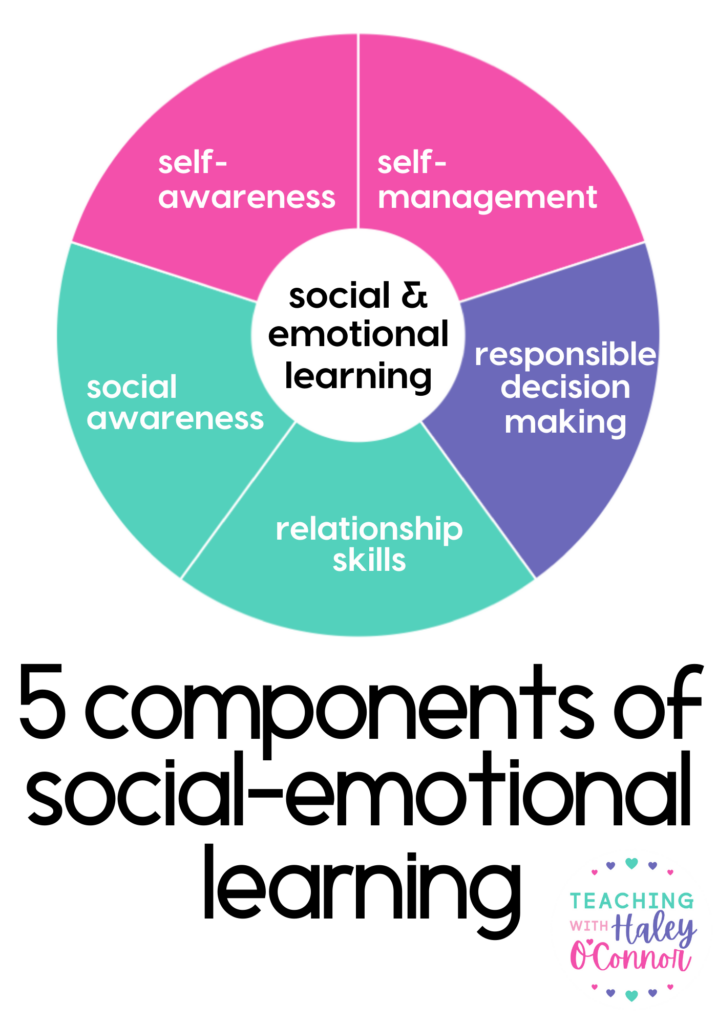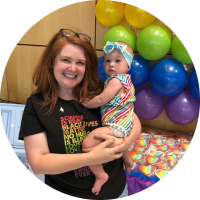The 5 Components of Social-Emotional Learning
Hi! Today I wanted to share about the 5 components of social-emotional learning. Almost 10 years ago, when I created my first Kindness unit, I had never studied SEL. I wasn’t an expert…I just knew my students need something different than I was offering them. I followed their lead, and determined where they needed instruction, modeling, and practice. It’s really incredible to me that my students showed me what they needed…and it pretty much lined up with the current research.
It has been so exciting for me to see how SEL has grown and become a normal part of school and home discussion. There have been so many studies that show how important it is, and many organizations focus entirely on the importnat of SEL at school and at home. It goes to show that we can and should listen to our students and kids at home…they know what they need.
Now that I have a beautiful 3.5 year old daughter, I am encouraged to see this same research being applied to parenting and early childhood education. While SEL is “trendy” right now, I don’t think it’s going anywhere. I hope that in the near future it becomes a normal part of teacher training, professional development, and even discussions with pediatricians.
One of the leaders in the Social-Emotional movement is CASEL, the Collaborative for Academic, Social, and Emotional Learning. They are doing so much work into creating resources for families and schools, as well as advocating for policies that support SEL at school and home. Each of the definitions I’m using for this blog post can be found on their website. There are many experts in the SEL field, and I am excited to continue to learn, grow, and share those with you! I have found CASEL’s definitions and break down to be the easiest to understand.
CASEL has broken Social-Emotional Learning into 5 key parts, and I have found this so helpful when thinking about the skills our student and children need to be successful. While this framework was created for elementary, middle and high school students, I think it can be applied to all children.

Self-Awareness
When I created my Self-Awareness unit, I found it the most challenging to create. CASEL defines self-awareness as, “The abilities to understand one’s emotions, thoughts, and values and how they influence behavior across contexts”. When we’re teaching our students or children about self-awareness, we explore things like having a growth mindset, identifying our emotions, and having integrity. I also consider this the area where we would discuss our strengths and weaknesses, hidden talents, and personality traits.
The following SEL units would support Self-Awareness skills in young learners.
Self-Management
CASEL defines Self-Management as “The abilities to manage one’s emotions, thoughts, and behaviors effectively in different situations to achieve goals and aspirations.” When we support self-management, we help our students show self-control, manage their emotions, handle stress and anxiety, be brave and set goals.
The following SEL units would support Self-Management skills in young learners.
Responsible Decision Making
According to CASEL, Responsible Decision Making, “is the abilities to make caring and constructive choices about personal behavior and social interactions across diverse situations.” When we support these abilities, we foster critical thinking, curiosity, problem solving, and identifying cause and effect in our own lives.
The following SEL units would support Responsible Decision Making skills in young learners.
Relationship Skills
Relationship Skills are defined as, “The abilities to establish and maintain healthy and supportive relationships and to effectively navigate settings with diverse individuals and groups.” Relationship skills include things like communication, cultural understanding, teamwork, and conflict resolution.
The following SEL units would support Responsible Decision Making skills in young learners.
Social Awareness
Social Awareness is defined as, “The abilities to understand the perspectives of and empathize with others, including those from diverse backgrounds, cultures, and contexts”. Social Awareness skills support students with empathy and compassion, expressing gratitude, and show concern and support for others.
The following SEL units would support Social Awareness skills in young learners.

